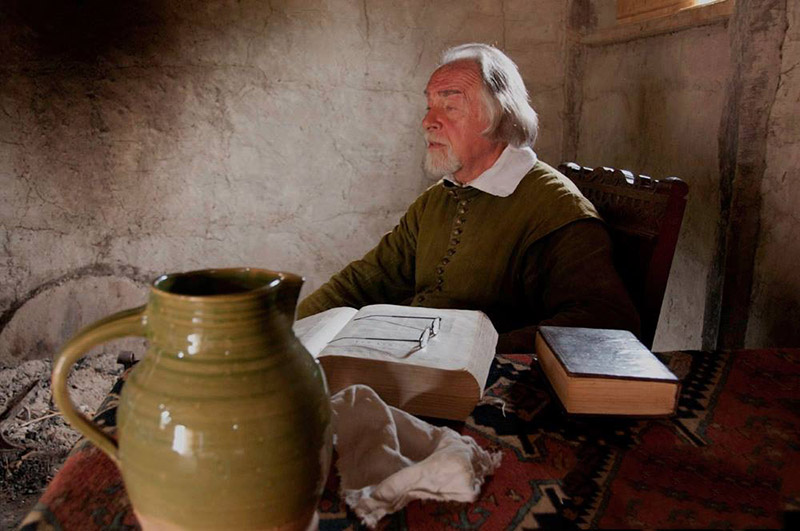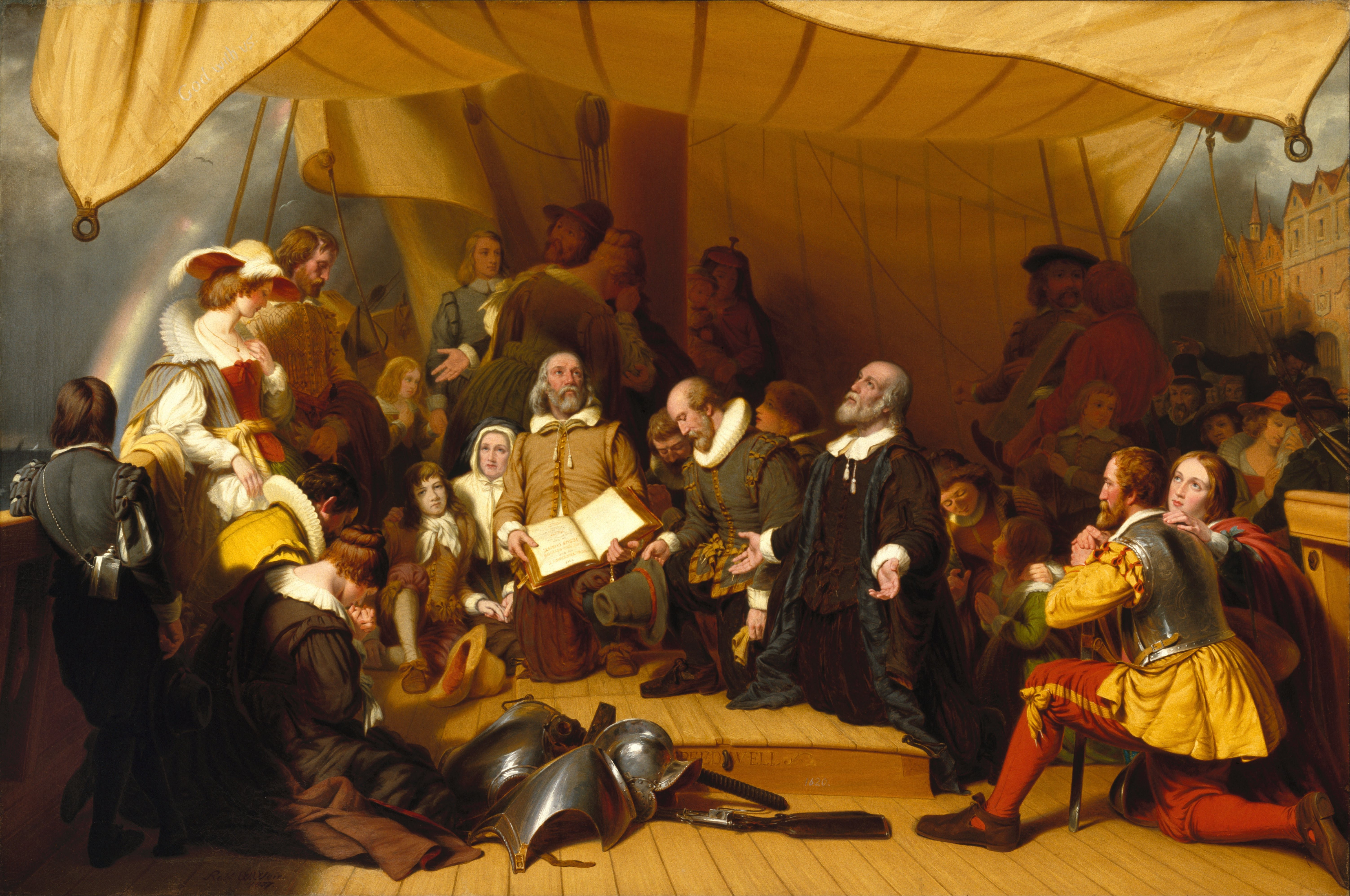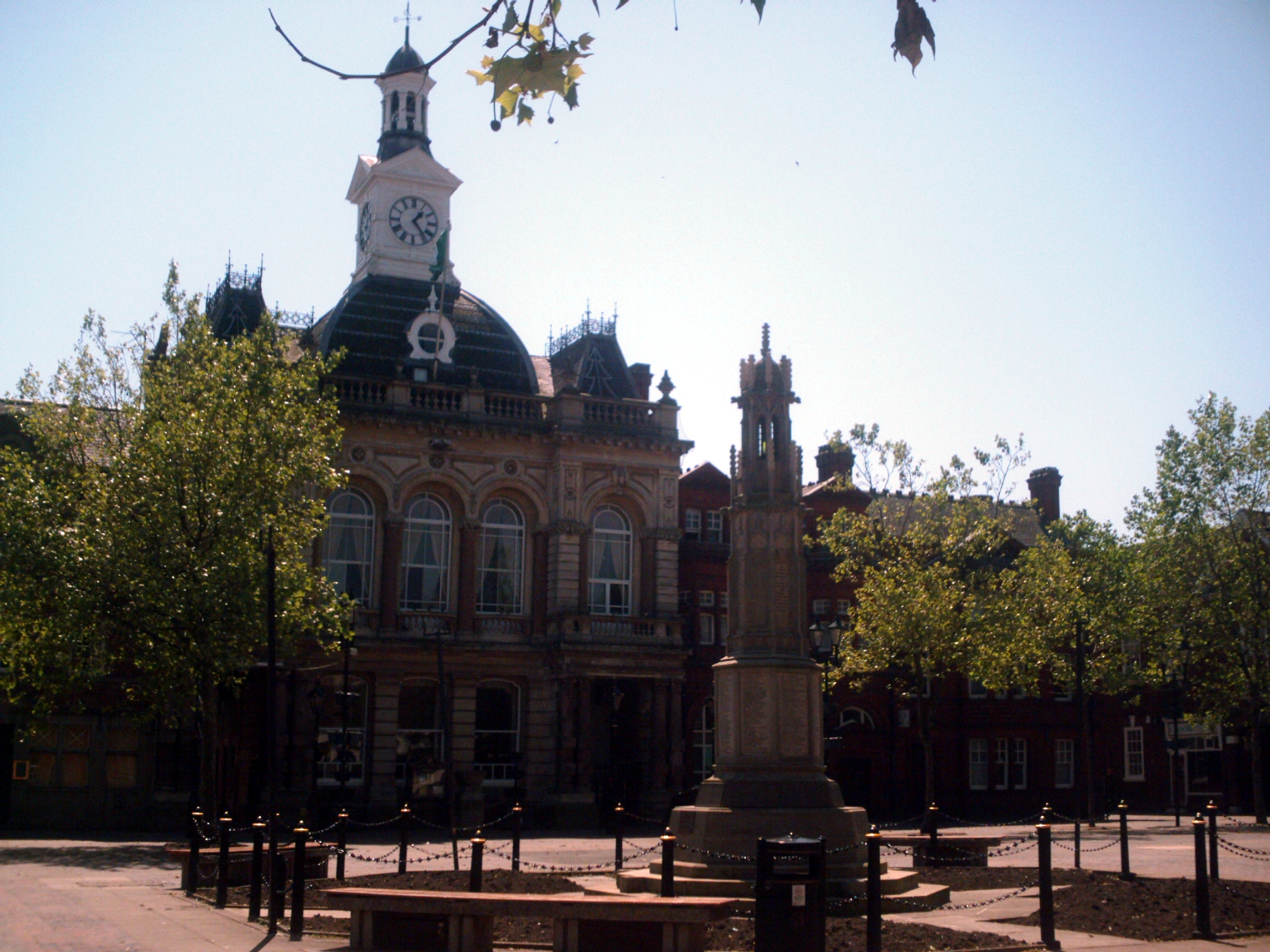|
Scrooby
Scrooby is a small village on the River Ryton in north Nottinghamshire, England, near Bawtry in South Yorkshire. At the time of the 2001 census it had a population of 329. Until 1766, it was on the Great North Road (United Kingdom), Great North Road so became a stopping-off point for numerous important figures including Queen Elizabeth I and Cardinal Wolsey on their journeys. The latter stayed at the Manor House briefly, after his fall from favour. In 958, Edgar, King of England, King Edgar granted an estate including land at ''Scroppenþorpe'', including an area now in the modern Scrooby, to Oscytel, Archbishop of York. The Manor House belonged to the Archbishops of York and so was sometimes referred to as a palace. (A nearby former farmhouse is still called Palace Farm.) At the end of the sixteenth century, the house was occupied by William Brewster, the Archbishop's bailiff, who was also postmaster. His son, also named William Brewster (Mayflower passenger), William, took th ... [...More Info...] [...Related Items...] OR: [Wikipedia] [Google] [Baidu] |
Scrooby Village Addison
Scrooby is a small village on the River Ryton in north Nottinghamshire, England, near Bawtry in South Yorkshire. At the time of the 2001 census it had a population of 329. Until 1766, it was on the Great North Road so became a stopping-off point for numerous important figures including Queen Elizabeth I and Cardinal Wolsey on their journeys. The latter stayed at the Manor House briefly, after his fall from favour. In 958, King Edgar granted an estate including land at ''Scroppenþorpe'', including an area now in the modern Scrooby, to Oscytel, Archbishop of York. The Manor House belonged to the Archbishops of York and so was sometimes referred to as a palace. (A nearby former farmhouse is still called Palace Farm.) At the end of the sixteenth century, the house was occupied by William Brewster, the Archbishop's bailiff, who was also postmaster. His son, also named William, took that post in the 1590s after a job as an assistant to the Secretary of State under Queen Elizabeth ... [...More Info...] [...Related Items...] OR: [Wikipedia] [Google] [Baidu] |
St Wilfrid's Church, Scrooby
St Wilfrid's Church, Scrooby is a Grade II listed parish church in the Church of England in Scrooby. History The church was built in the 15th century, and was restored by the Victorians in 1864 after many years of disrepair. The church is noted for its octagonal spire. Scrooby harboured a Separatist Puritan group, 1606–8, which fled to Holland in 1608 and then in 1620 sailed to America in the Mayflower. William Brewster, one of the Pilgrim Fathers and a ruling elder, worshipped in Scrooby Church. Present day Today, St Wilfrid's is in the Benefice of Blyth and Scrooby with Ranskill. Services from a central Anglican tradition are still held at St Wilfrid. An hour-long prayer service takes place on the first Sunday of the month, and Sunday morning worship takes place on the first and third Sunday of the month. The church congregation consists mostly of village residents. Organ The church contains an organ dating from 1871 by Gray and Davison. References Church of ... [...More Info...] [...Related Items...] OR: [Wikipedia] [Google] [Baidu] |
Scrooby Gibbet
Scrooby is a small village on the River Ryton in north Nottinghamshire, England, near Bawtry in South Yorkshire. At the time of the 2001 census it had a population of 329. Until 1766, it was on the Great North Road so became a stopping-off point for numerous important figures including Queen Elizabeth I and Cardinal Wolsey on their journeys. The latter stayed at the Manor House briefly, after his fall from favour. In 958, King Edgar granted an estate including land at ''Scroppenþorpe'', including an area now in the modern Scrooby, to Oscytel, Archbishop of York. The Manor House belonged to the Archbishops of York and so was sometimes referred to as a palace. (A nearby former farmhouse is still called Palace Farm.) At the end of the sixteenth century, the house was occupied by William Brewster, the Archbishop's bailiff, who was also postmaster. His son, also named William, took that post in the 1590s after a job as an assistant to the Secretary of State under Queen Elizabeth ... [...More Info...] [...Related Items...] OR: [Wikipedia] [Google] [Baidu] |
William Brewster (Mayflower Passenger)
William Brewster (1566–6710 April 1644) was an English official and ''Mayflower'' passenger in 1620. In Plymouth Colony, by virtue of his education and existing stature with those immigrating from the Netherlands, being a Brownist (or Puritan Separatist), Brewster became senior elder and the leader of the community. Life in England William Brewster was born in 1566 or 1567,Stratton, Eugene Aubrey (1986). ''Plymouth Colony: Its History and People, 1620–1691,'' p. 251, Salt Lake City, UT, US: Ancestry Publishing. most probably in Scrooby, Nottinghamshire, England. He was the son of William Brewster and Mary (Smythe) (Simkinson) Brewster and he had a number of step-brothers and step-sisters, including James, Prudence, Henry, George, and Edward Brewster. His paternal grandparents were William Brewster (1510–1558), and Maud Mann (1513–1558), from Scotland.Merrick, Barbara Lambert d., Comp.(2000). ''William Brewster of the Mayflower and His Descendants for Four Generations ... [...More Info...] [...Related Items...] OR: [Wikipedia] [Google] [Baidu] |
River Ryton
The River Ryton is a tributary of the River Idle. It rises close to the Chesterfield Canal near Kiveton Park, and is joined by a series of tributaries near Lindrick Common in the Metropolitan Borough of Rotherham, South Yorkshire, England. Most of its course is in Nottinghamshire, flowing through the town of Worksop. It meanders northwards to join the River Idle near the town of Bawtry on the South Yorkshire-Nottinghamshire border. While much of its route is rural, its course through Worksop is man made, a result of development and milling. It used to flow through Scrooby, where there was a mill, but was diverted northwards in the 1960s. It supplies water to the Chesterfield Canal through two feeders, and a number of the bridges which cross it are of interest architecturally, which has resulted in them becoming Listed structures. The water quality of the river is moderate, as a considerable proportion of the total flow is supplied by the processed water from sewage treatment w ... [...More Info...] [...Related Items...] OR: [Wikipedia] [Google] [Baidu] |
Pilgrim Fathers
The Pilgrims, also known as the Pilgrim Fathers, were the English settlers who came to North America on the ''Mayflower'' and established the Plymouth Colony in what is today Plymouth, Massachusetts, named after the final departure port of Plymouth, Devon. Their leadership came from the religious congregations of Brownists, or Separatist Puritans, who had fled religious persecution in England for the tolerance of 17th-century Holland in the Netherlands. They held many of the same Puritan Calvinist religious beliefs but, unlike most other Puritans, they maintained that their congregations should separate from the English state church, which led to them being labeled Separatists (the word "Pilgrims" was not used to refer to them until several centuries later). After several years living in exile in Holland, they eventually determined to establish a new settlement in the New World and arranged with investors to fund them. They established Plymouth Colony in 1620, where they erected ... [...More Info...] [...Related Items...] OR: [Wikipedia] [Google] [Baidu] |
Bassetlaw District
Bassetlaw is a local government district in Nottinghamshire, England. The district has four towns: Worksop, Tuxford, Harworth Bircotes and Retford. It is bounded to the north by the Metropolitan Boroughs of Doncaster and Rotherham, the east by West Lindsey, the west by both the Borough of Chesterfield and North East Derbyshire and the south by Mansfield District and Newark and Sherwood. The district is along with Bolsover District, North East Derbyshire and Borough of Chesterfield is a non-constituent member of the Sheffield City Region. History Bassetlaw was created as a non-metropolitan district in 1974 by the merger of the municipal boroughs of Worksop and East Retford and most of Worksop Rural District and East Retford Rural District following the passage of the Local Government Act 1972. Local Government in Nottinghamshire is organised on a two-tier basis, with local district councils such as Bassetlaw District Council responsible for local services such as housin ... [...More Info...] [...Related Items...] OR: [Wikipedia] [Google] [Baidu] |
Bawtry
Bawtry is a market town and civil parish in the City of Doncaster in South Yorkshire, England. It lies between Doncaster, Gainsborough and Retford, on the border with Nottinghamshire and close to Lincolnshire. The town is historically part of the West Riding of Yorkshire. Its population of 3,204 in the 2001 UK census increased to 3,573 in 2011, and was put at 3,519 in 2019. Nearby settlements include Austerfield, Everton, Scrooby, Blyth, Bircotes and Tickhill. History The origin of the name "Bawtry" is uncertain, but it is thought to contain the Old English words ''ball'' ("ball") and ''trēow'' ("tree"), so meaning it was a "(place at) ball-shaped tree". It was not mentioned in the Domesday Book, but it appears as ''Baltry'' in 1199 and as ''Bautre'' on a 1677 map. Bawtry was originally the site of a Roman settlement on Ermine Street between Doncaster and Lincoln. In 616 AD, the Anglo-Saxon King Aethelfrith died in battle against Raedwald, King of East Anglia, by the Riv ... [...More Info...] [...Related Items...] OR: [Wikipedia] [Google] [Baidu] |
Nottinghamshire
Nottinghamshire (; abbreviated Notts.) is a landlocked county in the East Midlands region of England, bordering South Yorkshire to the north-west, Lincolnshire to the east, Leicestershire to the south, and Derbyshire to the west. The traditional county town is Nottingham, though the county council is based at County Hall in West Bridgford in the borough of Rushcliffe, at a site facing Nottingham over the River Trent. The districts of Nottinghamshire are Ashfield, Bassetlaw, Broxtowe, Gedling, Mansfield, Newark and Sherwood, and Rushcliffe. The City of Nottingham was administratively part of Nottinghamshire between 1974 and 1998, but is now a unitary authority, remaining part of Nottinghamshire for ceremonial purposes. The county saw a minor change in its coverage as Finningley was moved from the county into South Yorkshire and is part of the City of Doncaster. This is also where the now-closed Doncaster Sheffield Airport is located (formerly Robin Hood Airport). In 20 ... [...More Info...] [...Related Items...] OR: [Wikipedia] [Google] [Baidu] |
Gibbet
A gibbet is any instrument of public execution (including guillotine, decapitation, executioner's block, Impalement, impalement stake, gallows, hanging gallows, or related Scaffold (execution site), scaffold). Gibbeting is the use of a gallows-type structure from which the dead or dying bodies of criminals were hanged on public display to deter other existing or potential criminals. Occasionally, the gibbet was also used as a method of execution, with the criminal being left to die of exposure, thirst and/or starvation. The practice of placing a criminal on display within a gibbet is also called "hanging in chains". Display Gibbeting was a common law punishment, which a judge could impose in addition to execution. This practice was regularized in England by the Murder Act 1751, which empowered judges to impose this for murder. It was most often used for traitors, murderers, highwayman, highwaymen, pirates, and sheep stealers and was intended to discourage others from commi ... [...More Info...] [...Related Items...] OR: [Wikipedia] [Google] [Baidu] |
Mayflower
''Mayflower'' was an English ship that transported a group of English families, known today as the Pilgrims, from England to the New World in 1620. After a grueling 10 weeks at sea, ''Mayflower'', with 102 passengers and a crew of about 30, reached America, dropping anchor near the tip of Cape Cod, Massachusetts, on , 1620. Differing from their contemporaries, the Puritans (who sought to reform and purify the Church of England), the Pilgrims chose to separate themselves from the Church of England because they believed it was beyond redemption due to its Roman Catholic past and the church's resistance to reform, which forced them to pray in private. Starting in 1608, a group of English families left England for the Netherlands, where they could worship freely. By 1620, the community determined to cross the Atlantic for America, which they considered a "new Promised Land", where they would establish Plymouth Colony. The Pilgrims had originally hoped to reach America by early Oc ... [...More Info...] [...Related Items...] OR: [Wikipedia] [Google] [Baidu] |






